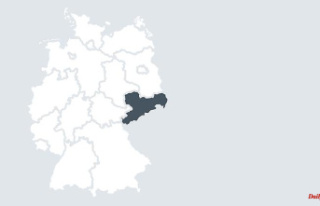In the future, walkers may be confused. Recently, the Swiss-Italian border was moved a few dozen meters. Usually, it follows the line of separation of the waters of the glaciers whose flow towards the north marks the Swiss territory, and that towards the south, Italy.
But this was modified by the melting of the Theodule glacier which, losing almost a quarter of its mass between 1973 and 2010, gave way to rock, forcing the two Alpine neighbors to redraw a few tens of meters of their border, not without causing some territorial problems.
Because until now, a refuge of Italian nationality was located at the top of this mountain, culminating at 3,480 meters above sea level. But the territory has since passed into the Swiss zone. The Matterhorn Guides refuge, which offers board and lodging in this corner of the Alps among the most popular ski enthusiasts, was the subject of intense diplomatic negotiations for more than three years, until a compromise was reached. found last year, the details of which remain secret.
"We split the pear a little in two", explains to Agence France press the person in charge of the Swiss national border Alain Wicht, who took part in the negotiations where everyone made concessions to find "a solution so that the two feel if not winners, at least not losers." According to Alain Wicht, these adjustments are frequent and are generally settled by comparing the readings taken by the teams of the two countries, without political intervention. And for good reason: the melting of glaciers is accelerating and can initiate geographical changes like this.
According to a record of data seen by the British news agency Reuters, "glaciers in the Alps are on track for their highest mass losses in at least 60 years of record keeping" Looking at the difference between the amount of snow that has fallen in winter and the amount of ice that has melted in summer, scientists can measure how much a glacier has shrunk in a given year.
Since last winter, when it snowed relatively little compared to previous years, the Alps have gone through two major heat waves at the start of summer, including one in July marked by temperatures close to 30°C in the village Swiss mountain resort of Zermatt. During this heat wave, the altitude at which the water froze was measured at a record high of 5,184 meters. While normally, in summer the water freezes between 3,000 and 3,500 meters above sea level.
Most of the world's mountain glaciers are retreating due to melting linked to climate change. But those in the European Alps are particularly vulnerable because they are smaller with relatively little ice cover. According to scientists, the temperature in the Alps is warming by about 0.3°C per decade, about twice as fast as the global average.












